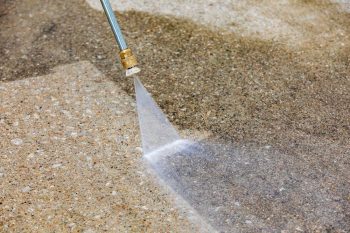
A vacuum cleaner is a vital tool in our everyday cleaning routine. But what happens when the vacuum hose gets blocked, and the suction power reduces? The vacuum cleaner is less efficient, and the cleaning process becomes laborious. This comprehensive guide will provide you with a step-by-step process on how to unblock a vacuum hose, including the materials needed, precautions to take, and tips to prevent future blockages.
To unblock a vacuum hose, first unplug your vacuum cleaner and remove the hose. Check for clogs by holding one end of the hose up to a light source. If there’s a blockage, use a broomstick or long rod to gently push it out. For a thorough cleaning, pour a mixture of baking soda and vinegar into the hose, then rinse and dry it thoroughly before reattaching it to your vacuum cleaner.
Signs of a Blocked Vacuum Hose
Before we delve into the process of unblocking a vacuum hose, it’s important to recognize the signs that indicate a blocked vacuum hose. These include:
- Reduced suction power
- Strange sounds from the vacuum cleaner
- The vacuum cleaner overheats quickly
- The vacuum cleaner fails to pick up debris
If you notice any of these signs, it’s time to check your vacuum hose for blockages.
Causes of Vacuum Hose Blockage
Understanding what causes a vacuum hose blockage can help prevent future blockages. Here are some common causes:
- Accumulation of debris: This is the most common cause of blockage. Over time, hair, dust, and other debris can accumulate in the hose, causing a blockage.
- Accidental suction of large objects: Sometimes, you may accidentally vacuum up large objects like toys, coins, or pieces of paper that can block the hose.
- Worn out or damaged hose: Over time, the hose can wear out and develop cracks, which can lead to blockages.
Materials Needed to Unblock a Vacuum Hose
To unblock a vacuum hose, you will need:
- Broomstick or a long rod
- Baking soda
- White vinegar
- Screwdriver (if needed to remove the hose)
- Needle-nose pliers (if needed to pull out the clog)
Step-by-Step Guide to Unblock a Vacuum Hose
Now that we’ve covered the basics, let’s dive into the step-by-step process of unblocking a vacuum hose.
1. Unplug and Detach the Hose
The first step is to unplug your vacuum cleaner and remove the hose. This is a crucial safety measure to prevent any electrical shocks. The method of removing the hose may vary depending on your vacuum model, so refer to the manufacturer’s instructions if necessary.
2. Check for Clogs
Hold one end of the hose up to a light source and check if you can see light through the other end. If not, there’s likely a blockage.
3. Push Out the Clog
Take a broomstick or a long rod and gently push it through the hose. This should help dislodge any clogs in the hose. Be careful not to be too forceful as this can damage the hose.
4. Clean the Hose
For a thorough cleaning, pour ½ cup of baking soda and 1 cup of vinegar into the hose. This mixture will create a reaction that helps to break down any remaining debris.
5. Rinse and Dry
After cleaning the hose, rinse it thoroughly with water. Make sure to dry it completely before reattaching it to your vacuum cleaner.
6. Reattach the Hose
Once the hose is completely dry, reattach it to your vacuum cleaner.
Precautions to Take While Unblocking a Vacuum Hose
While unblocking a vacuum hose, it’s important to take precautions to prevent any damage to the hose or vacuum cleaner.
- Always unplug your vacuum cleaner before performing any maintenance.
- Be gentle when removing the hose and other accessories.
- Use appropriate tools and avoid using sharp objects that could puncture the hose.
- Avoid using harsh chemicals that could damage the hose.
How to Prevent Future Blockages
To prevent future blockages, it’s essential to maintain your vacuum cleaner regularly. Here are some tips to help you out:
- Regularly clean the vacuum hose.
- Avoid vacuuming large items.
- Empty the vacuum bag or canister regularly.
- Regularly inspect the vacuum hose for any signs of wear and tear.
What to Do If You Can’t Unblock the Hose Yourself
If you’ve tried everything and still can’t unblock the hose, it might be time to seek professional help. Take your vacuum cleaner to a repair shop or contact the manufacturer for assistance.
In conclusion, a blocked vacuum hose can significantly reduce the efficiency of your vacuum cleaner. However, with the right tools and steps, you can easily unblock the vacuum hose and restore its suction power. Remember, regular maintenance is key to preventing future blockages and ensuring your vacuum cleaner’s longevity.
Frequently Asked Questions
How often should I clean my vacuum hose?
You should clean your vacuum hose at least every three to six months, depending on how frequently you use your vacuum cleaner. Regular cleaning helps to prevent clogs and maintain optimum suction power.
Can I use a wire hanger to unclog the vacuum hose?
Yes, you can use a wire hanger to unclog a vacuum hose. However, be careful not to puncture or damage the hose. It’s best to straighten the hanger and cover the end with a small cloth to prevent scratching the inside of the hose.
Can I use bleach to clean the vacuum hose?
It’s not recommended to use bleach to clean a vacuum hose as it could damage the material of the hose. Instead, use a gentle cleaning solution like a mixture of baking soda and vinegar, as suggested in the guide.
What if the clog is stuck in the middle of the hose and I can’t reach it?
If the clog is in the middle of the hose and you can’t reach it, you can try using a longer rod or a plumber’s snake to dislodge it. If this doesn’t work, it might be best to seek professional help.
Can I use the vacuum cleaner if the hose is slightly cracked?
If the hose is slightly cracked, it can reduce the suction power of your vacuum cleaner. While you can still use it, it’s best to replace the hose as soon as possible to ensure maximum efficiency.












